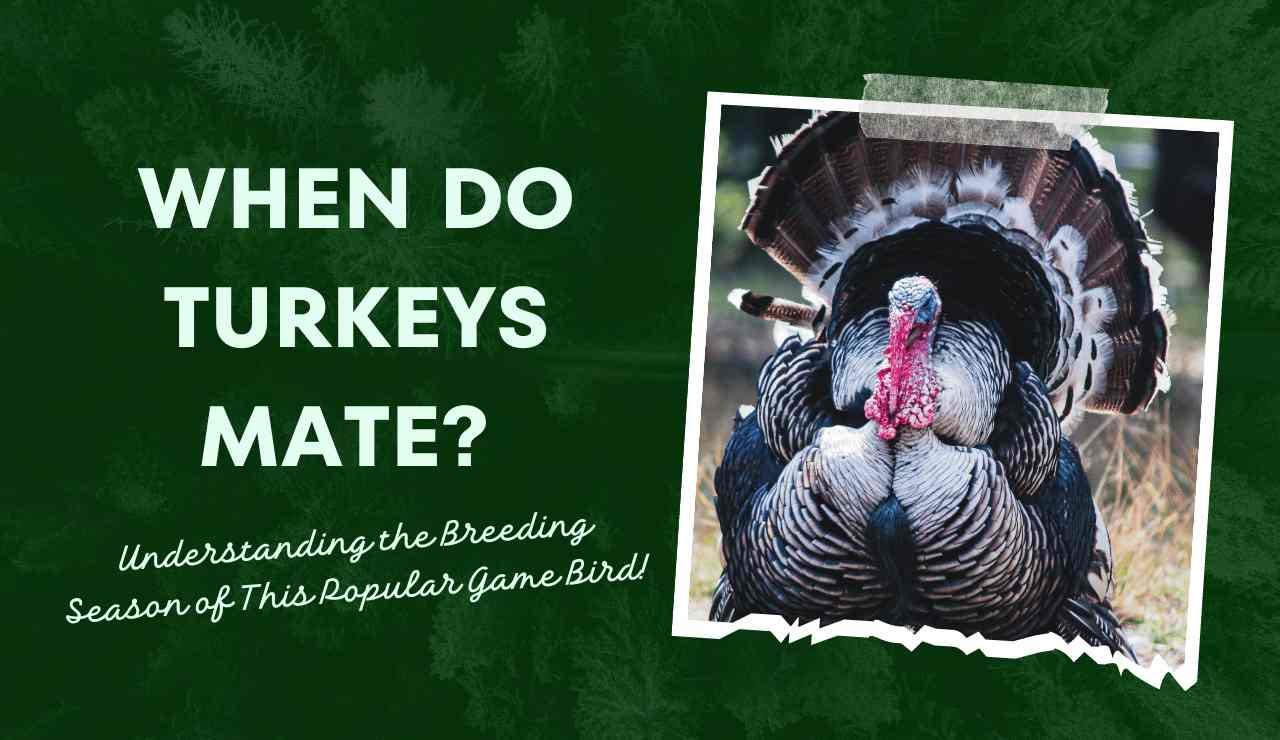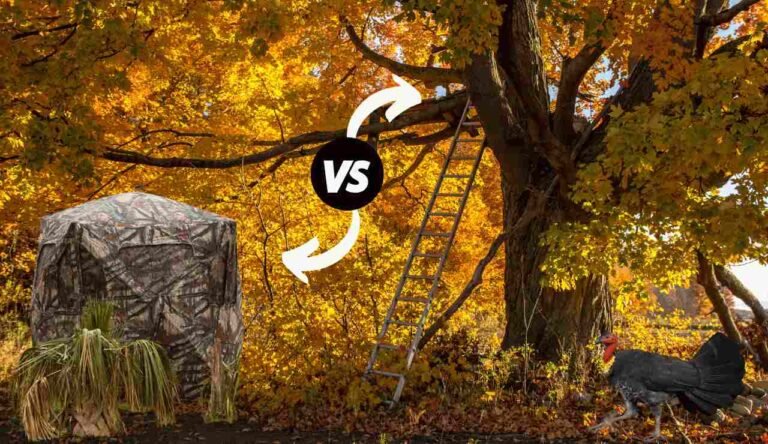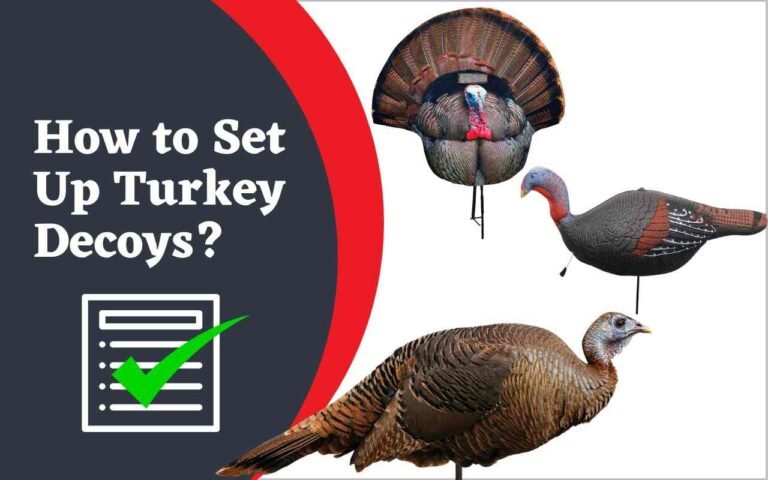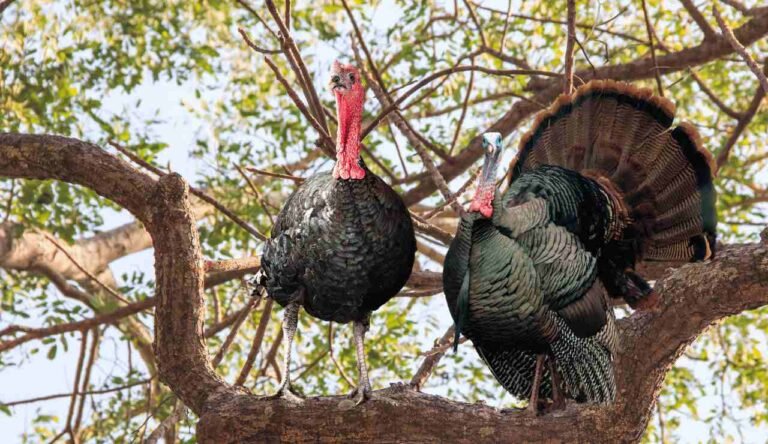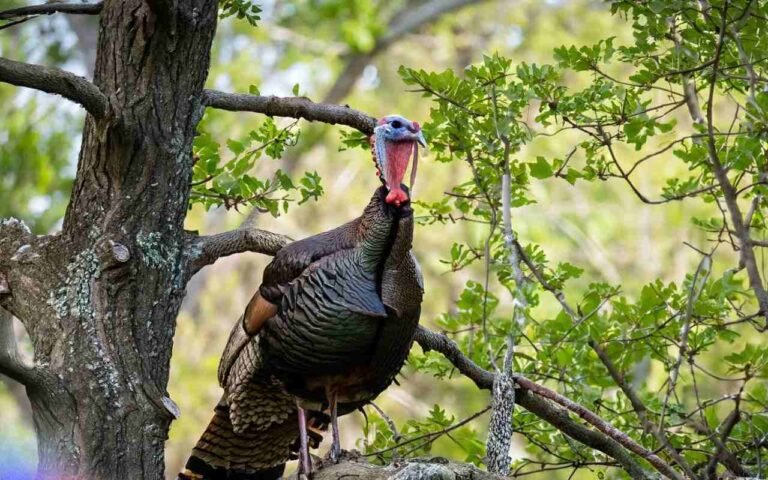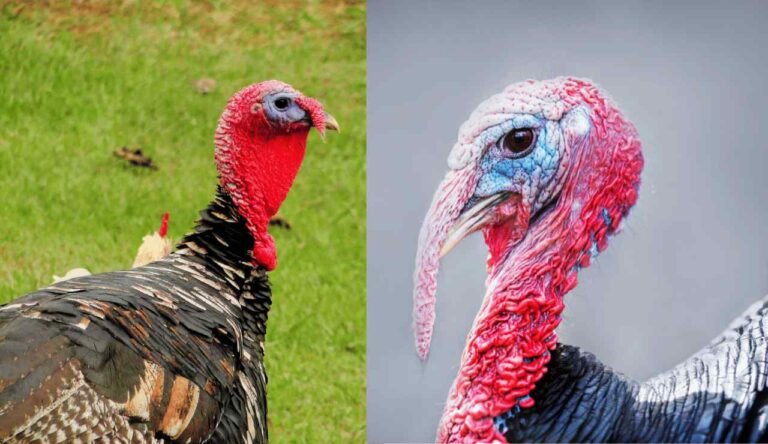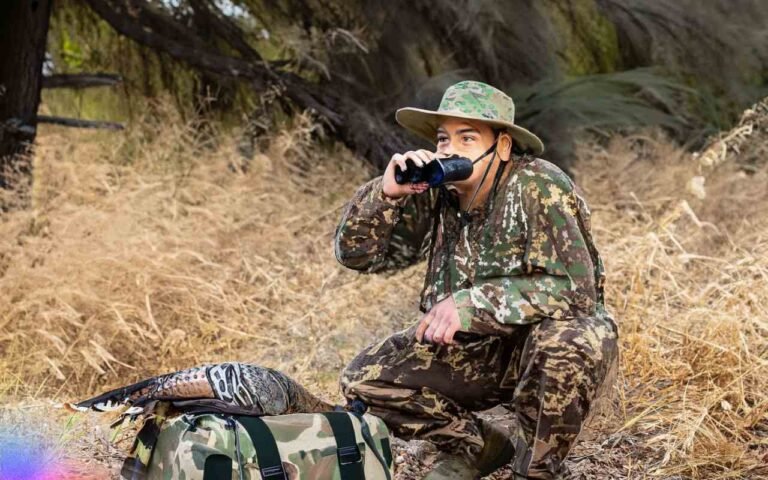When Do Turkeys Mate? Understanding the Breeding Season of This Popular Game Bird! When Do Turkeys Mate?
Both hunters and wildlife lovers must be aware of the turkey mating season. Knowing when turkeys breed may aid hunters in planning their excursions and improve their chances of success. Understanding the mating season may help wildlife lovers get insights into the ecology and behavior of these intriguing birds.
Turkeys breed from March through May in most US states. Geography, climate, and local habitat factors may impact time. We’ll go more into the breeding season for turkeys in the following parts, as well as the variables that may affect when and how turkeys mate.
When Do Turkeys Mate?
In North America, the mating season for turkeys normally lasts from late February until early June. Depending on the area and climate, the precise timing may change. The lengthening of the day during this period increases Tom’s libido and causes him to feel the want to mate. During this time, hens may mate with gobblers more than once. To impress the hens during their mating rituals, turkeys puff out and do various displays. Turkeys may band together outside of the mating season with other birds of the same age and sex.
Turkey Mating Season State wise list
| States | Turkey Mating Season |
|---|---|
| Alabama | Late February to April |
| Alaska | April to May |
| Arizona | March to early April |
| Arkansas | March to April |
| California | March to May |
| Colorado | Late March to April |
| Connecticut | Late April to May |
| Delaware | Late March to early April |
| Florida | March to April |
| Georgia | Late March to early May |
| Hawaii | Year-round |
| Idaho | Late April to early May |
| Illinois | Late March to early April |
| Indiana | Late March to early May |
| Iowa | Late April to early May |
| Kansas | Late March to early May |
| Kentucky | Late March to early May |
| Louisiana | March to April |
| Maine | Late April to May |
| Maryland | Late March to early May |
| Massachusetts | Late April to May |
| Michigan | Late April to early May |
| Minnesota | Late April to May |
| Mississippi | March to April |
| Missouri | Late March to early May |
| Montana | April to May |
| Nebraska | Late March to early May |
| Nevada | April to May |
| New Hampshire | Late April to May |
| New Jersey | Late March to early May |
| New Mexico | April to May |
| New York | Late April to May |
| North Carolina | Late March to early May |
| North Dakota | Late April to May |
| Ohio | Late April to early May |
| Oklahoma | March to April |
| Oregon | April to May |
| Pennsylvania | Late April to May |
| Rhode Island | Late April to May |
| South Carolina | Late March to early May |
| South Dakota | Late April to May |
| Tennessee | Late March to early May |
| Texas | March to April |
| Utah | April to May |
| Vermont | Late April to May |
| Virginia | Late March to early May |
| Washington | April to May |
| West Virginia | Late April to early May |
| Wisconsin | Late April to early May |
| Wyoming | Late April to May |
The Turkey Breeding Season Timeline
| Key Dates/Milestones | Timeline |
|---|---|
| Start of breeding season (southern regions) | Late February to early March |
| Start of breeding season (northern regions) | April to May, between March to mid-April for Eastern wild turkeys in northern states |
| End of breeding season | Typically mid- to late-May, mid-summer for Eastern wild turkeys |
| Average length of breeding season | 16-18 weeks |
| Peak breeding period | Typically in late March to early April, may vary depending on weather conditions and location |
| Incubation period for turkey eggs | 26-28 days, with egg-laying primarily in March and April and peak hatching in early May |
Factors That Affect Turkey Breeding
| Factor | Description |
|---|---|
| Weather Conditions | Weather affects turkey breeding. Dry, hot temperatures may reduce food and water supplies, affecting turkey reproduction. Heavy rain or snow may also affect mating and nesting. |
| Habitat Quality | Habitat quality affects turkey breeding. Turkey breeding success might decline due to habitat fragmentation, nesting loss, and food and water deterioration. |
| Turkey Population Density | High population densities may increase competition for resources and breeding territory, affecting turkey breeding performance. |
| Availability of Food and Water | Food and water affect turkey breeding success. Food and water shortages might lower physical condition and breeding success. |
Turkey Mating Behaviors
Courtship Displays: Toms, or male turkeys, engage in wooing behavior throughout the mating season. Gobbling and strutting are two behaviors that draw in female turkeys, or hens, for mating.
Strutting and Gobbling: During the mating season, toms display gobbling and strutting characteristics. While strutting involves the tom puffing out its feathers, fanning its tail, and making a drumming sound to impress the hens, gobbling involves the tom making a distinctive call to attract hens. Toms strive to find unmated hens or hens that have nest failure during the laying phase; therefore, gobbling and strutting behavior often increases during this time.
Nesting Methods: Hens lay eggs in a ground nest, normally one egg each day, until the clutch, which typically has 9–12 eggs, is finished. The hens will scatter to lay eggs after the tom has bred all of them. Hens may have nest failure throughout the nesting season, and toms may continue to gobble and strut to find unmated hens.
Understanding Turkey Habitat
Turkey behavior tracking and scouting
- Know when the mating season, brought on by the lengthening of the days in spring, takes place.
- Watch how turkeys choose their mates by crouching for the females and gobbling and strutting for the males.
- Pay attention to the responses that decoy and calls elicit, then modify your approach as necessary.
- To find roosting and feeding spots, use turkey sounds.
Using decoys and calls effectively
- As an early-season tactic, use a decoy setup with a single Jake or a Jake and a hen in the breeding position.
- Place your turkey decoys on the side you anticipate the gobbler will enter from, 45 degrees away from the hunter.
- When calling, pay attention to the rhythm or timing of the hen calls and make necessary adjustments.
- To improve your chances of success, use a variety of calls, such as slate, box, or diaphragm calls.
Understanding Turkey’s habitat preferences
- Scout the region to discover the locations of the turkeys’ eating grounds, roosts, and migration routes.
- Find regions with acorns, fruit, and insects that turkeys enjoy eating.
- Know the terrain and use it by hunting from a high point or in a forested region with plenty of covers, for example.
Conclusion
Hunters and wildlife lovers must understand the turkey breeding season. Tracking turkey activity, utilizing decoys and sounds, and knowing turkey habitat preferences may help hunters during the breeding season. Hunters must comprehend turkey mating behavior and attractant sounds and decoys. They should also know where turkeys mate and graze. This knowledge enhances hunting success and lowers turkey habitat damage. Finally, knowing turkey breeding behavior helps wildlife lovers appreciate these wonderful birds and their vital function in the environment.
Frequently Asked Questions
How long does the turkey breeding season last?
The breeding season of turkeys is affected by location and climate. Wild turkeys breed in the south between February and March and in the north between April and May. Male turkeys breed with many females throughout the spring and early summer mating season. The breeding season might extend a few days to a week during the second gobbling peak, which starts prime hunting season. The breeding season for southern eastern wild turkeys runs from March until mid-summer, with re-nesters returning in late August. Northern wild turkeys may start breeding in mid-April and lay eggs in May. Depending on the species and location, turkeys breed from February/March through late spring/early summer.
What is the peak of turkey breeding season?
Depending on location and weather, turkey breeding season peaks around April. The breeding season starts in February in the south and April or May in the north. Male turkeys begin the mating season with a peak gobbling period. Turkeys reproduce and gobble again after nesting and incubation. The mating season for turkeys consists of numerous phases and behaviors that vary depending on location and environment.
How long does the turkey breeding season last?
Species and geography determine the length of the turkey breeding season. Southern states produce wild turkeys in March, whereas northern states produce them in May. The mating season lasts many weeks or months and is divided into three phases, with the peak occurring in spring for a few days to a week. Several re-nesters may arrive in late August. Lone turkeys and nesting hens breed from late winter through early June.
What are the factors that affect turkey breeding season?
A variety of variables influence the wild turkey breeding season. Increased sunshine hours boost male turkey sex hormones and mate desire. The mating season is also affected by the physical condition of female turkeys after the winter, the spring green cycle, and the weather. Hunting may interrupt turkey mating by interfering with gobbling. Wildlife officials may change hunting restrictions to improve turkey breeding success to sustain healthy turkey populations.
What is the difference in turkey breeding season between northern and southern states?
Southern wild turkeys breed earlier than northern wild turkeys. The mating season for eastern wild turkeys begins in southern regions in February or March but begins in northern states in April or mid-April. The cycle is completed when the chicks hatch in June or midsummer farther north. In August, roosting birds may hatch. The major breeding season in the Black Hills is from early April to early May. Northern states begin raising turkeys a few weeks later than Southern states.
- Louisiana Turkey Season 2026: LA Turkey Hunting [Dates, Regulations, Licenses & More] - January 5, 2026
- Kentucky Turkey Season 2026: Latest Hunting Dates, Regulations & Licenses! - January 5, 2026
- Kansas Turkey Season 2026-2027: Latest Dates, Licenses, and Regulations Now Available! - January 3, 2026
